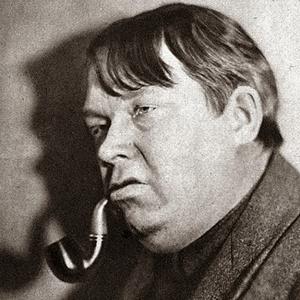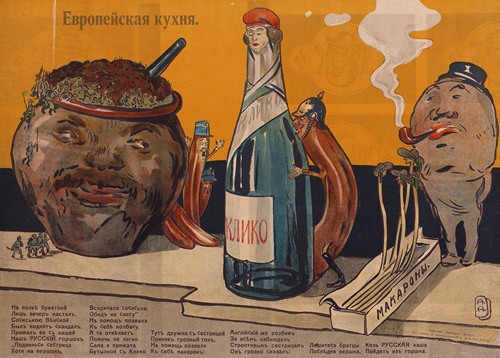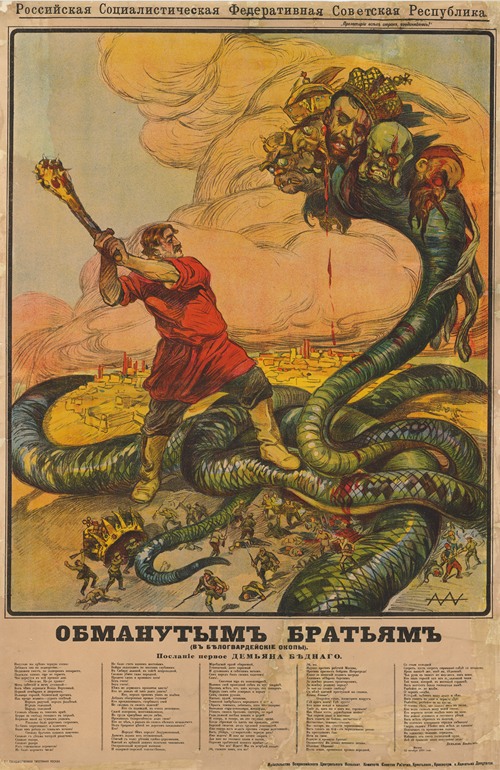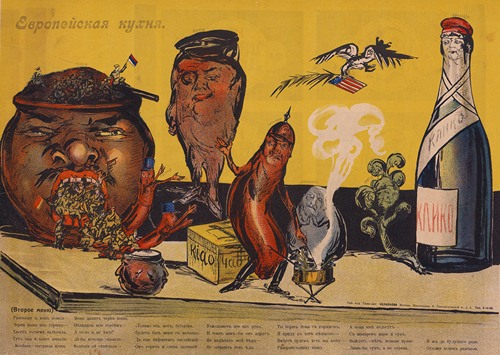

Alexander Petrovich Apsit was born in Riga on 25th March, 1880. He moved to Saint Petersburg in 1894 and attended art school and became a student of Lew Dmitriew-Kawkaski.
Aspit worked for various Russian magazines and on the outbreak of the First World War was employed by the government to design war posters. After the Bolshevik Revolution Apsit was commissioned by the State Publishing House to design revolutionary posters.
The Year of Proletarian Dictatorship was produced in October, 1918, for the first anniversary of the revolution. It shows the key elements of the revolutionary poster's imagery: a farmer with a red flag and scythe in the foreground, and a blacksmith with a hammer crushing the emblems of fallen capitalism - both as guards in front of a field of simple flags in the background an industrialized city and a rising sun.
Several posters were produced during the Russian Civil War with the intention of persuading young men to join the Red Army. The White Army was often portrayed as a monster.
After the war, he worked in Latvia as a book illustrator. In addition, he designed advertising posters and greeting cards, as well as the wrapping paper of chocolates and sweets from the company Vilhelms Ķuze. In 1939, Apsit moved to Nazi Germany, where he died in 1943.
Alexander Apsit died in Ludwigslust on 19th September, 1943.


